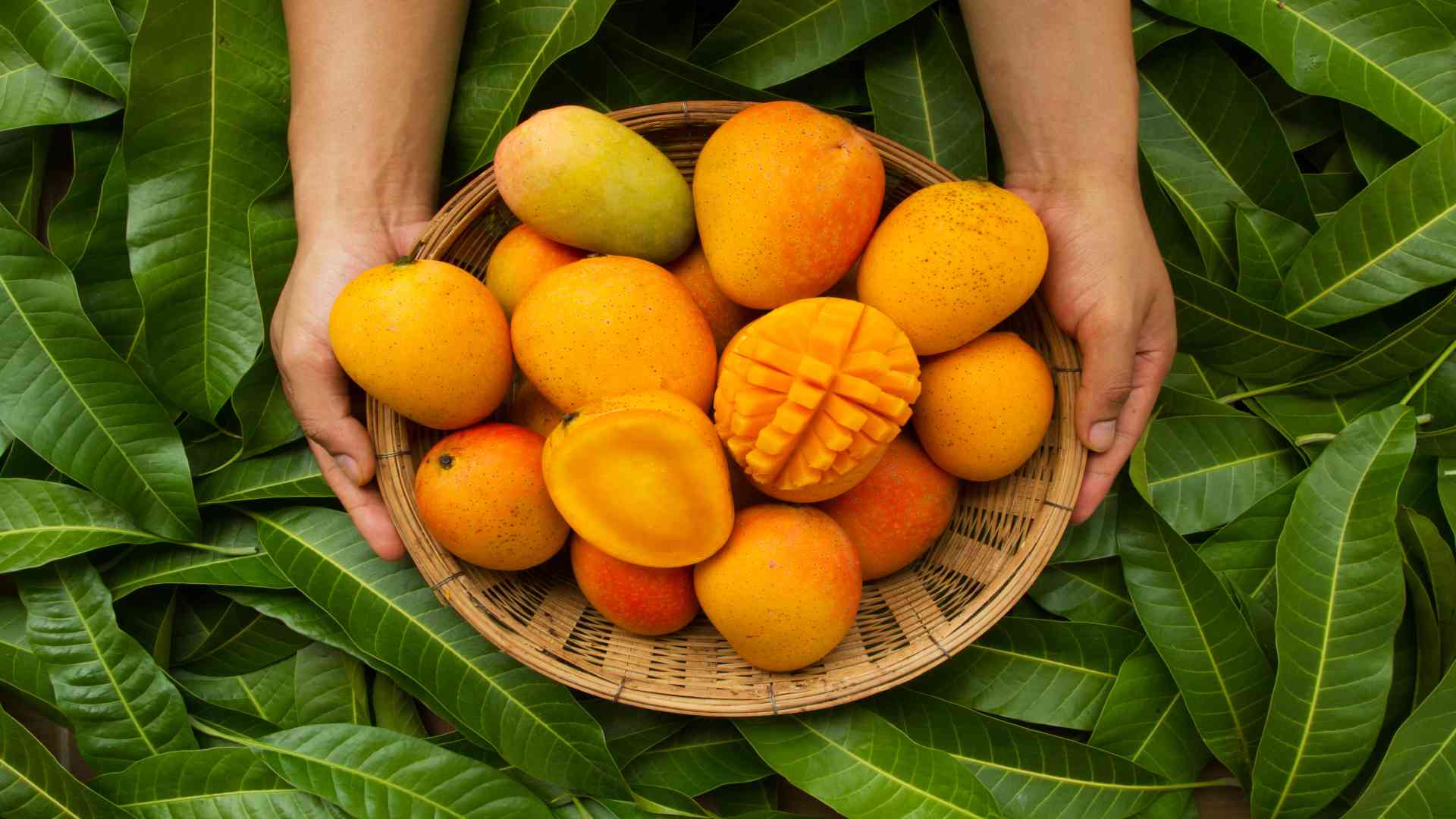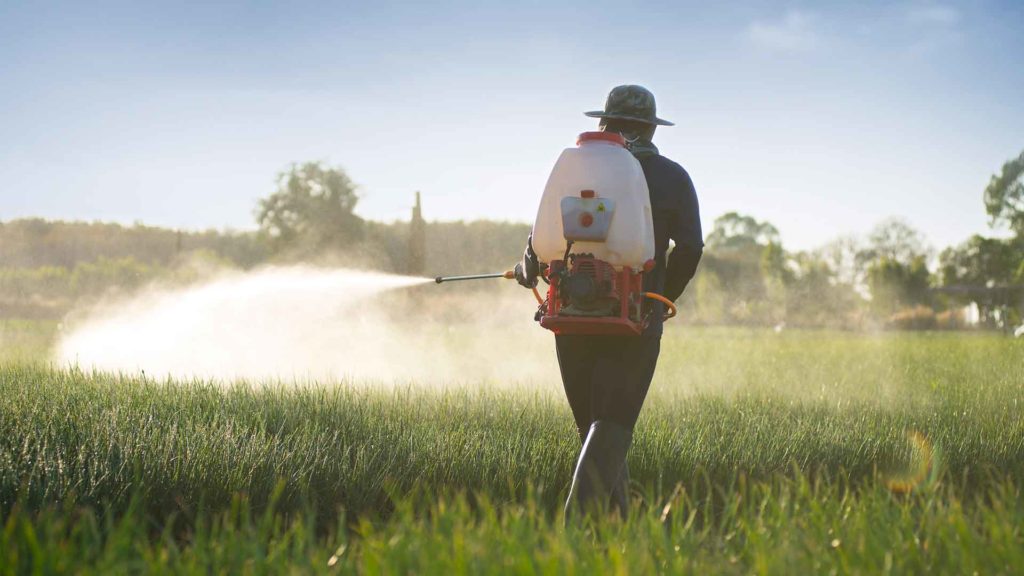Mango Fruit: The King of Fruits
Mango fruit is one of the most popular fruits in the world, known for its sweet taste and juicy flesh. But did you know that boron plays an important role in mango fruit quality? What happens if mangoes are boron-deficient? And, how can the boron level be improved for higher yields and quality?

Boron In Mango fruit
Role of Boron in Mango Fruit Quality
Mango (Mangifera Indica Linnaeus) is a tropical and subtropical fruit grown in over 100 countries. It is the second most cultivated tropical fruit, the sixth-largest fruit crop in the world, and has a strong cropping potential under climate projections. As a result, mango fruit is one of the most important food sources for the world’s constantly growing population.
However, mango trees experience several issues, including micronutrient deficiencies, physiological stresses, and fruit yield and quality issues, all of which reduce production and exports.
For optimum growth and yield, mango trees require well-aerated, deep, and fertile soils. Mango trees are primarily grown in Asia in calcareous soils deficient in zinc (Zn) and boron (B). These micronutrients are required for reproductive cell growth and development, flowering initiation, and sugar translocation.
Boron deficiency is usually transient and develops during flowering and seed set. A lack of B for an extended period causes the early shedding of flowers or fruits. This indicates that B is in higher demand during floral or fruit development.
Boron-enriched fertilizers are essential to ensure optimal nutrient levels in leaves and higher quality mango fruit production. In South Asia, orchard soils are often B-deficient, resulting in reduced nitrogen (N), phosphorus (P), and potassium (K) uptake by plants.
Additionally, boron enhances the biochemistry of flowers, giving rise to more fruit sets per panicle and a greater proportion of fruit retention. This, in turn, results in a more sustainable mango fruit yield, fruit quality and quantity, pulp weight, total soluble solids (dissolved solids within a substance), and ascorbic acid contents.
What are the Symptoms of Boron Deficiency in Mango Trees?
Boron deficiency is common in areas with high rainfall, high temperatures, acidic soils, and calcareous soils. It occurs as browning fruit flesh, softening and wateriness of the flesh, and cracking of the fruit. Leaves may also become lusterless with thickened veins.
How can Boron Deficiency be Corrected in Mango Trees?
Soil and foliar application of boron are effective methods to correct boron deficiency in mangoes. The study was conducted to evaluate the effectiveness of these two methods on mango fruit yield and quality, leaf mineral content, and fruit retention percentage.
1. Mango Fruits Yield and Quality Parameters
Boron is one of the essential micronutrients for plants, and its use can improve fruit quality and yield. When an experiment was conducted over three years, foliar and soil boron application led to an overall increase in fruit yield (weight, volume) and fruit quality (pulp recovery, total soluble solids, acidity) with no major variations between years. The maximum rise in fruit volume (243 cm3), fruit weight (268 g), pulp recovery percentage (57%), and total soluble solids (16 Brix) were observed after applying borax at 75 gm.
2. Leaf Mineral Content
A significant increase in leaf boron concentrations was observed in response to yearly applications of B nutrients, with the highest growth occurring in the second year of the study. Soil application of borax at 75 gm resulted in higher leaf B concentrations as well as leaf N, P, and K contents than no B treatment or soil application of other B compounds. These results suggest that annual applications of borax may be necessary to maintain optimal leaf B concentrations in mango fruit trees.
3. Fruit Retention Percentage
Fruit retention and yield are important factors in determining the success of a crop. In this study, the fruit retention and yield response to foliar and soil applications of boron concluded that the borax applied at 75 gm resulted in mean fruit retention (around 0.6%) and yield (106 kg/plant).
This finding shows that the foliar boron application increased fruit yield but was lesser than the soil boron application. However, a reduction in yield was reported in the third year, which may be due to the corresponding reduction in fruit retention percentage.
Countries With the Top Mango Fruit Production
Mango fruit is a delicious and popular fruit that people worldwide enjoy. This fruit grows on trees more than 100 feet in height and 12 feet in diameter. The fruit comes in various colors, such as orange, red, green, and yellow. But did you know mangoes have a long and fascinating history as well?
Mango is indigenous to India, Bangladesh, and Pakistan. The fruit was first cultivated in India around 2000 BC. From there, it spread to East Asia between 500 and 400 BC. By the 15th century, mangoes had made their way to the Philippines, quickly becoming a favorite food. Today, mango fruit trees are found in many tropical climates.
It is the most important in tropical areas of South America, Hawaii, the Caribbean, Central America, Africa, and Asia. Mango farmers frequently use grafting to help ensure fruit production. Grafting is also quicker than seeding. Global mango production was under 43 million metric tons in 2013, which then increased to 55 million in 2020.
How to Get the Best Yield
Mango trees are an important part of the fruit industry in many tropical countries. In order to produce high-quality fruits, farmers need to ensure that their mango trees receive the necessary nutrients. One important way to accomplish this is to apply pre-flowering soil applications of boron and zinc.
According to research, this method of nutrient application can more effectively mitigate leaf mineral deficiencies and enhance fruit yield and quality than other treatment methods.
Substantial improvements in mango yield variables such as retention percentage, fruit-set number per panicle, fruit weight, volume, pulp recovery, total soluble solids, and early fruit shedding were observed during ripening with reductions in titratable acidity and early fruit shedding. Substantial changes in taste, flavor, texture, aroma, and acceptability were also observed.





